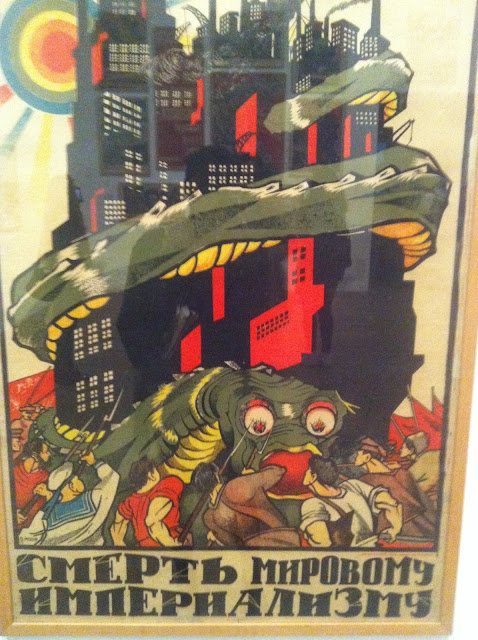Academic Writing:
Tate Modern Visit
‘Poetry and
Dreams’: Russian Revolutionary Posters
The
propaganda posters of the Russian Revolution were displayed as part of the ‘Poetry
and Dreams’ exhibition within the museum. It was an entire room dedicated to
showing off the street posters that exhibited the ideals and illusions of the Russian
Revolution. Its large quantity of posters spread out over one room, suggested
and successfully managed to expose not only the rapid, mass production of propaganda
images, newspapers and leaflets that developed through the era of the Revolution,
but the dramatic change in graphic art and design alongside the changes of the
Soviet Union. Additionally, the posters are successfully in showing off the impressive
creation of a street art available to all.
From this
particular section of the exhibition, I was mostly interested in the strong
sense of individuality that each poster carried out. Having been created and printed
by various different artists, though each poster suggested and delivered the
same message, each was strikingly different due to the wide and differing
approaches and or mediums that each artist took in order to create their particular
poster. I personally found that although every poster carried a sense of individuality
the striking colour of red that was explicit in every poster also managed to
suggest an impression of uniformity, of not only the artists themselves, but in
my opinion of the Revolution as a whole.
One poster I
was intrigued by in particular titled ‘Death to Worlds’ Imperialism’ interested
me due its differing style of graphic art. It seemed almost manga like, and
carried a strong sense of Japanese art. This, in my view, suggested that there
was a travelling of artists, either to outside countries or to Russia, where
ultimately styles and ways of drawing could be passed over and shared to other
artists - Ultimately creating an even wider and larger sense of scale to the artistic
community behind the Russian Revolution.
Death to Worlds' Imperialism - Artist Unknown
Conclusively,
I feel the exhibition was vastly successful overall in an aesthetic sense, but
more prominently definitely showed a questioning to the definition of a typical
poster. These revolutionary posters in particular I feel were exhibition not
only because of their interesting and unique approaches to graphic art and
design but because they captured a strong sense of the Revolution itself and
were not just successfully as propaganda images, but as pieces of art.


No comments:
Post a Comment